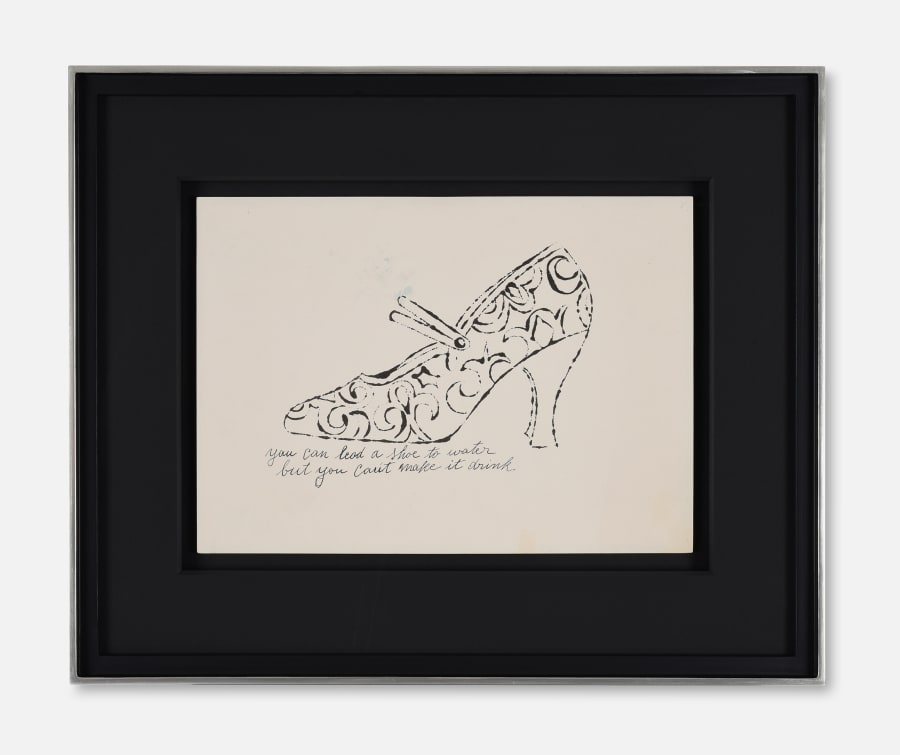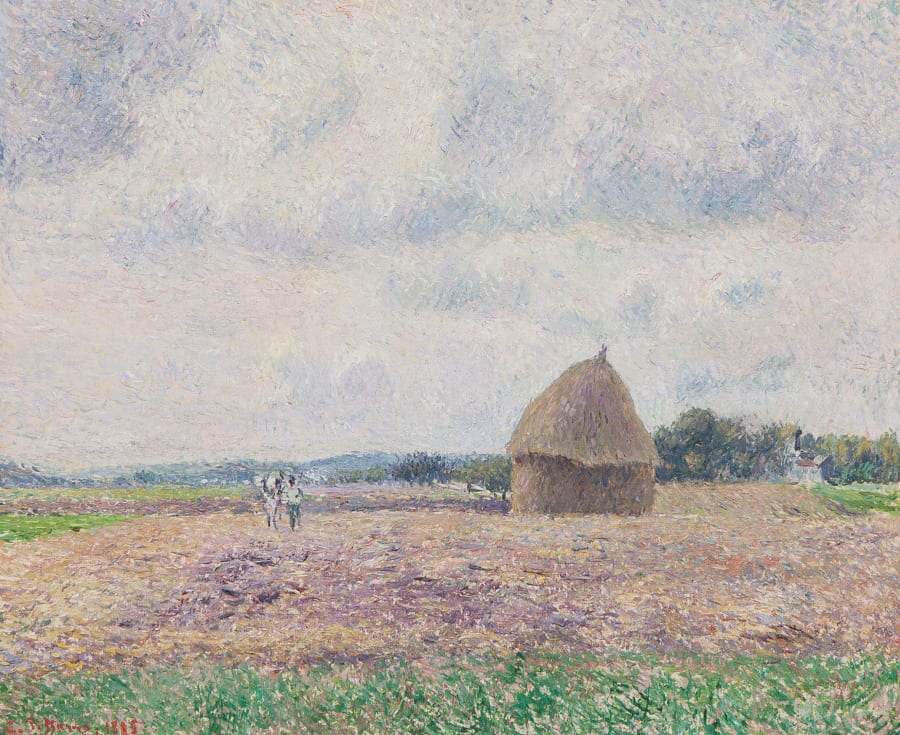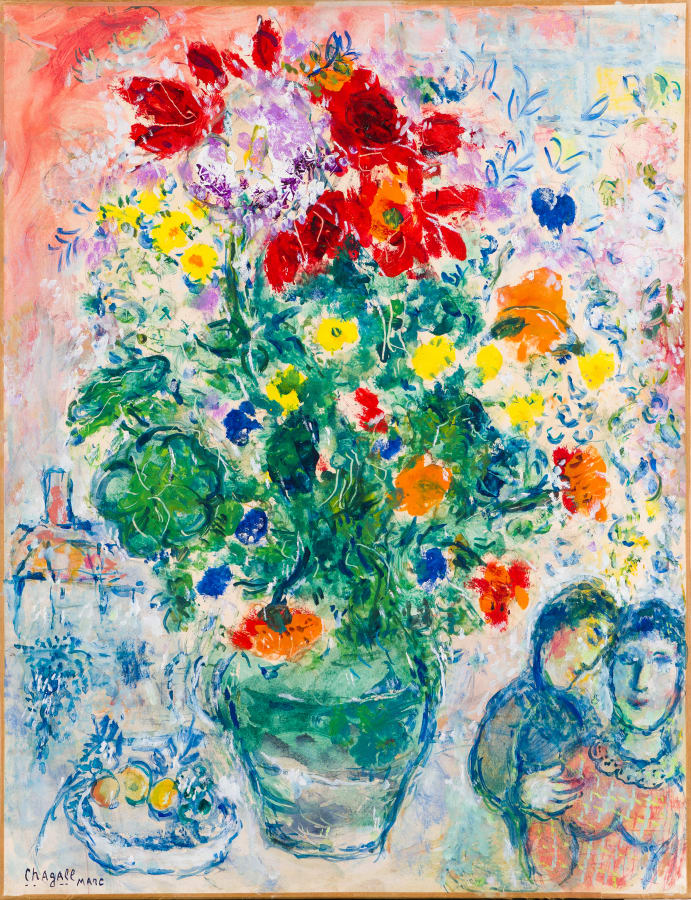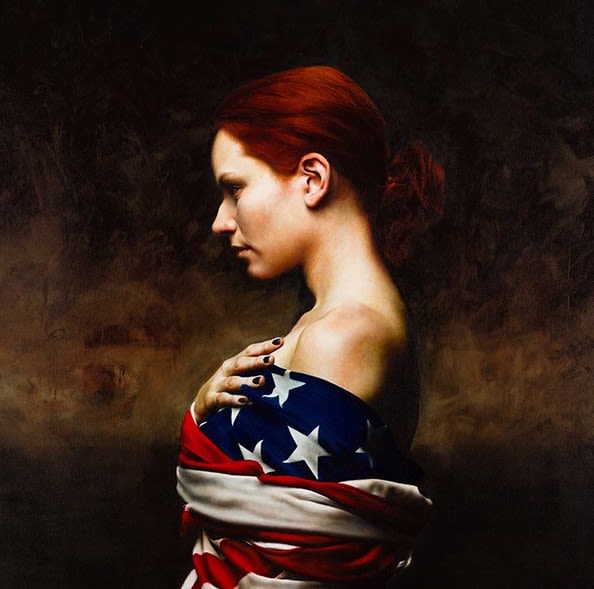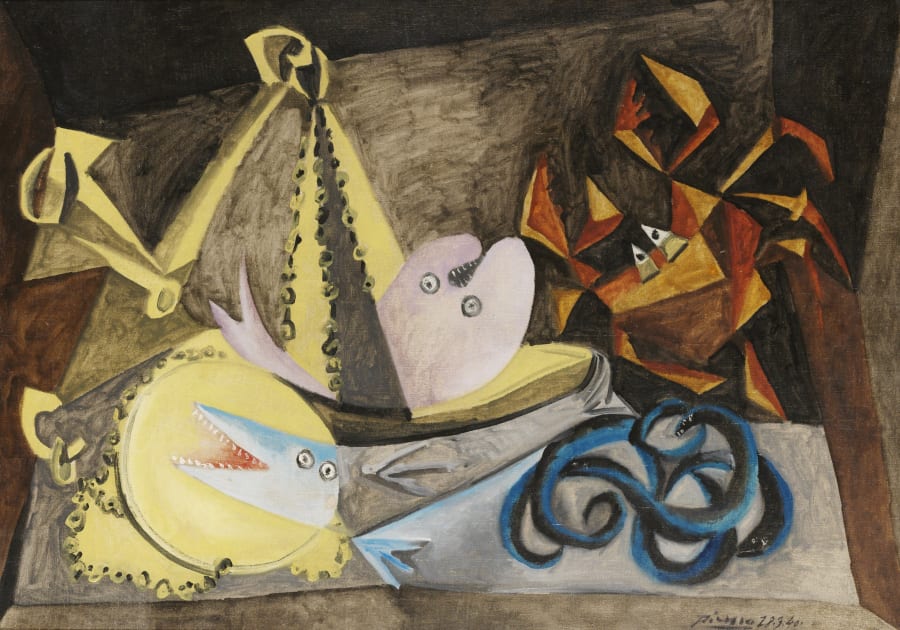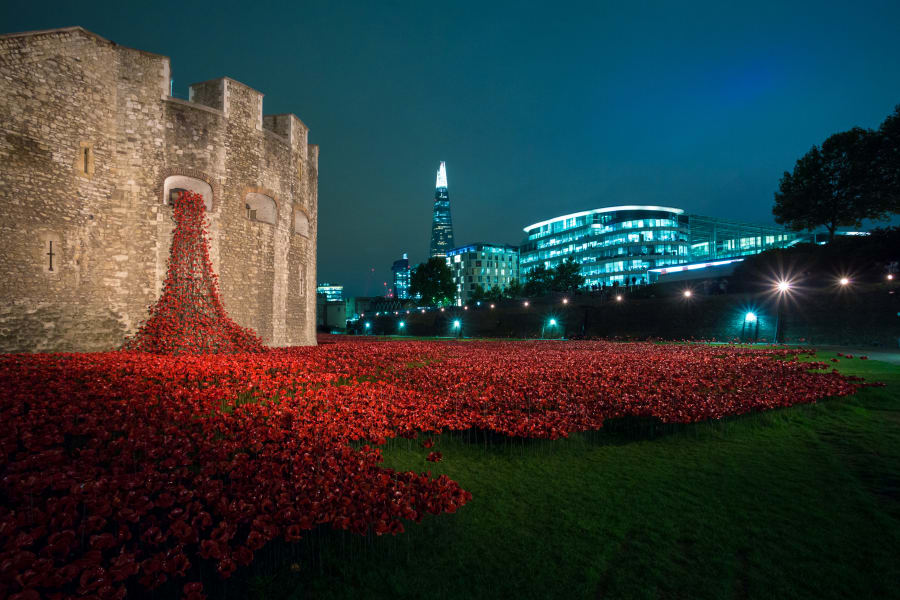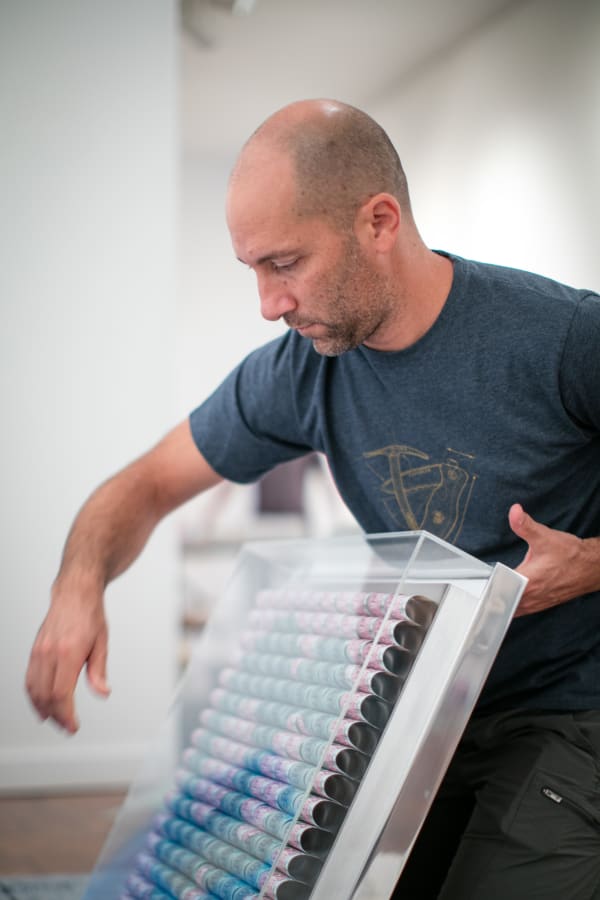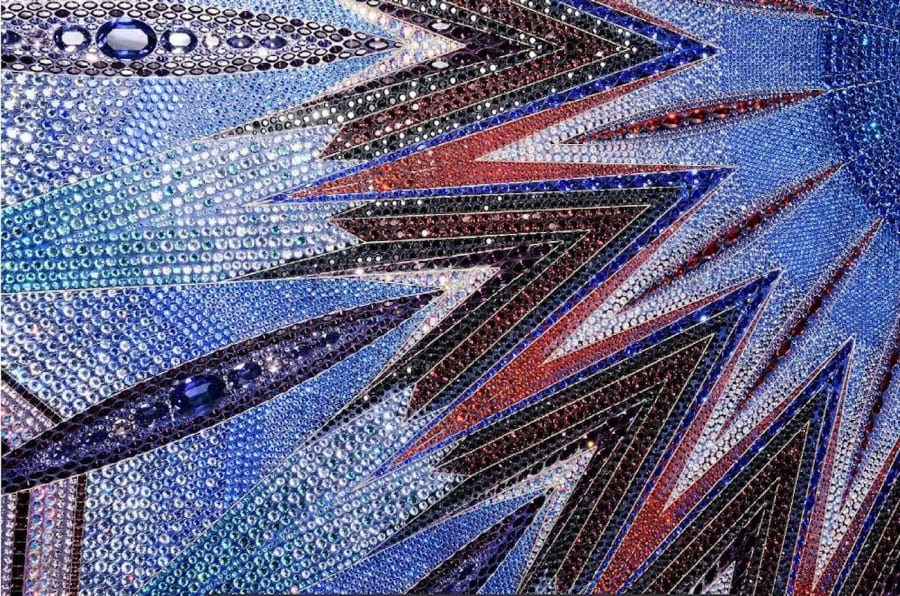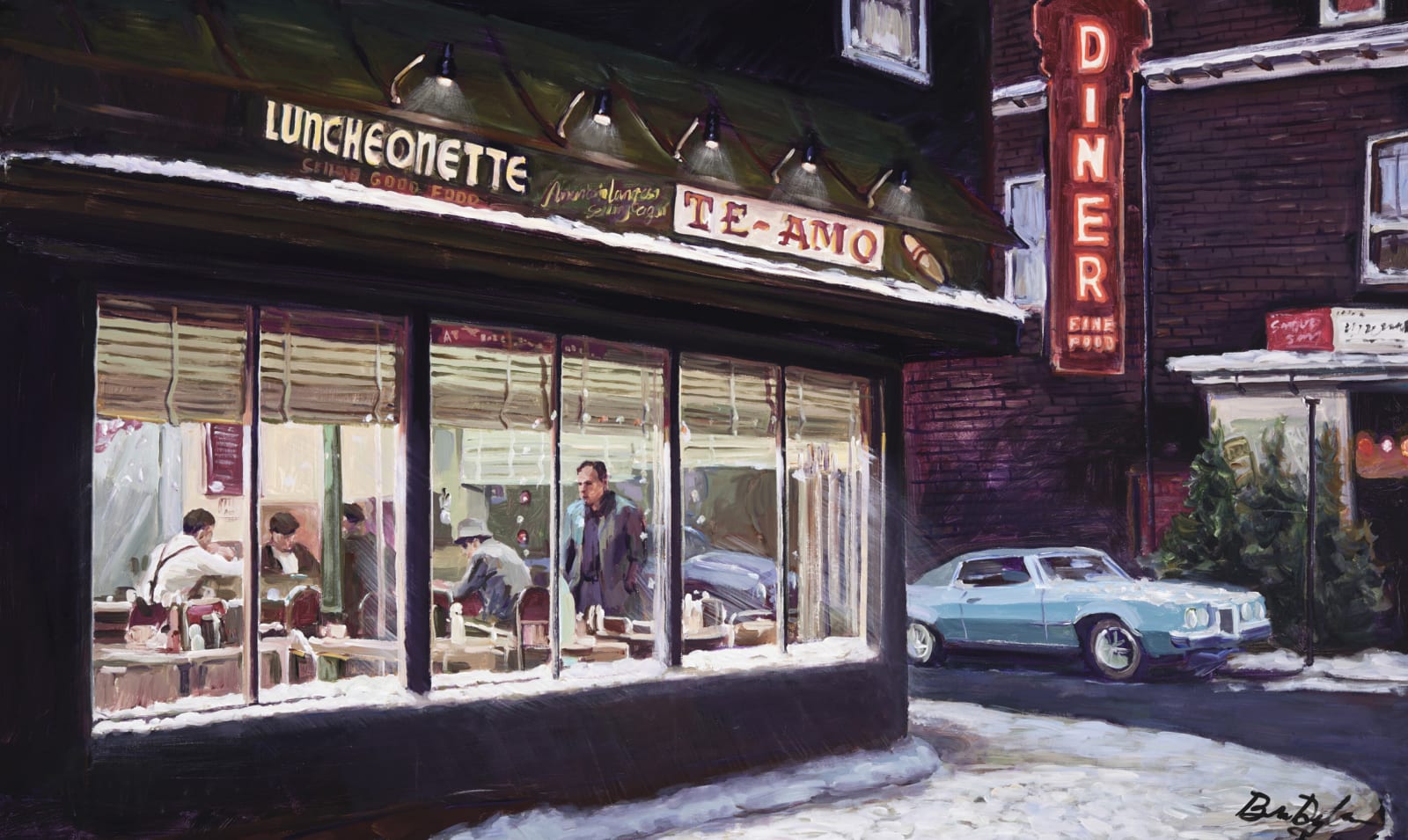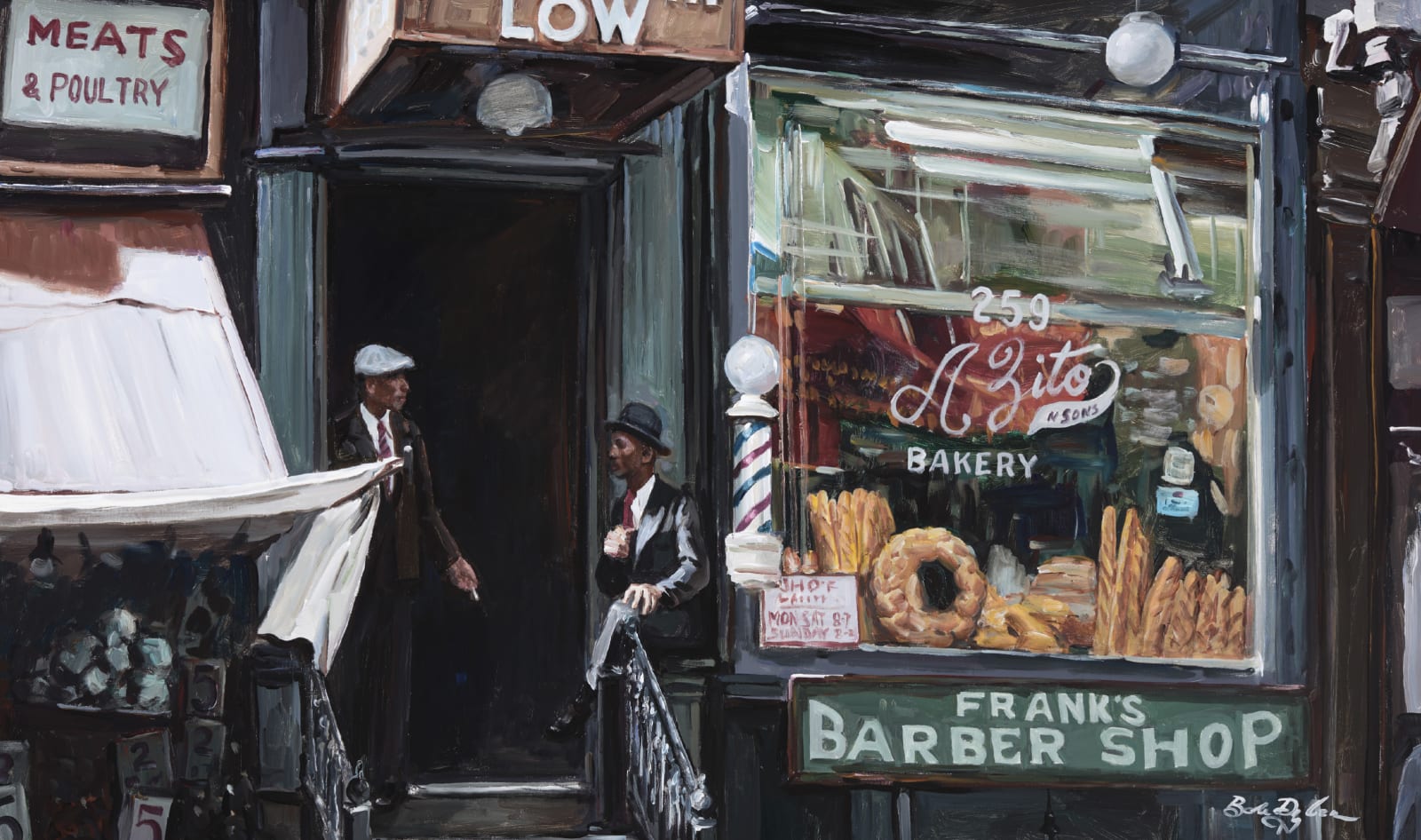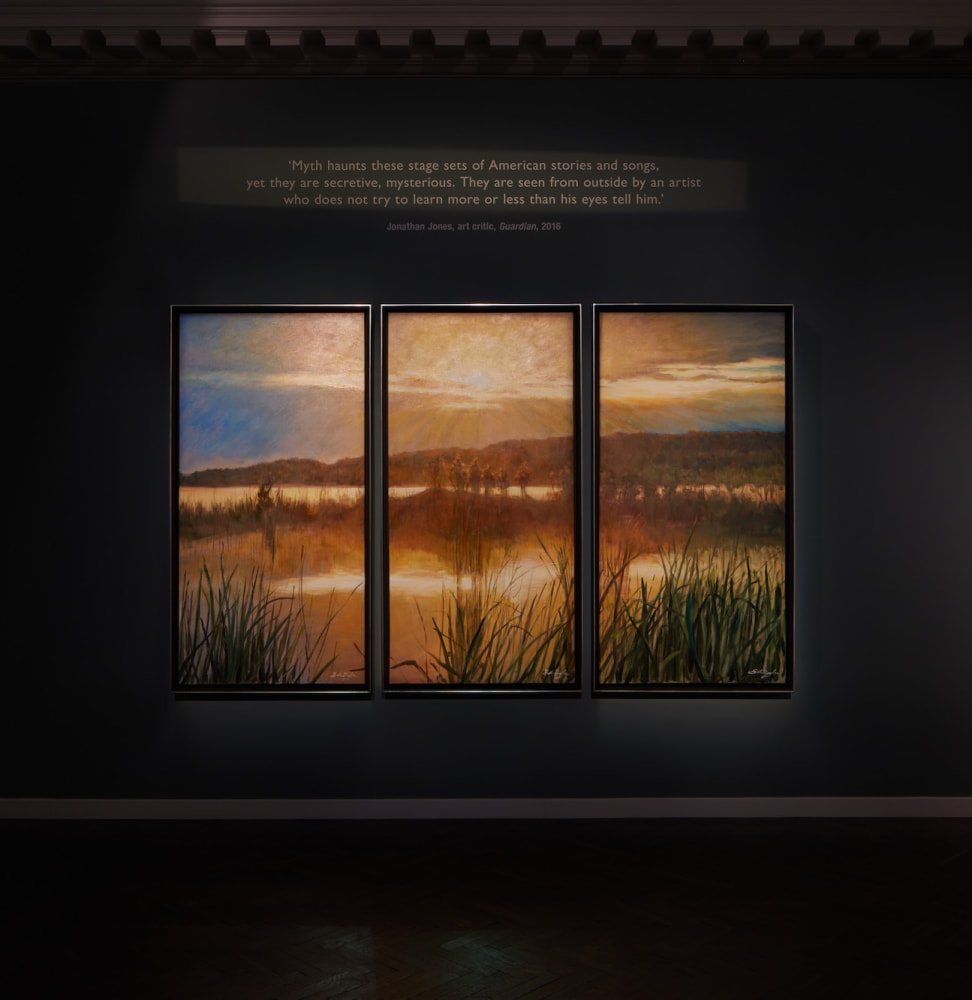

Mitch Griffiths The Things They Carried
The Things They Carried
Art historian Catherine McCormack examined the many themes explored in Griffiths' seminal panting The Things They Carried in the catalogue produced for his 2016 exhibition Realisms at The State Hermitage Museum in Saint Petersburg, Russia:
'The image is of a vulnerable and semi-conscious woman, barely covered by the gleaming folds of an emergency blanket. She is being dragged along the beach by a policeman in riot gear. The landscape and treatment of the figures recall equally forlorn depictions of the fate of real human lives in the face of political unrest that appear in Romantic history painting … Around the figures lies the detritus of the migrant journey: the discarded life-jackets and makeshift raft material, but personal ephemera too, of soft toys, toothbrushes and painkillers. The addition of lemons here (used by the refugees as cleanser and antiseptic) and the arrangement of the red life-jackets like folds of fabric make this composition reminiscent of seventeenth-century still-life paintings … That still-life tradition communicated the luxuriant abundance afforded by the owner of the image, but it also brought the everyday life of the table to the foreground of philosophical contemplation, grounded in real objecthood. Griffiths attempts something similar in this work by making the objects the centre of the narrative. However, in this instance, they convey a sense of destitution as opposed to wealth.'
'In referencing Dutch still-life painting and the grandiose manner of past history paintings, Griffiths borrows from the visual language of images that have already earned their place in the canon of art history. They are works that - falsely or rightly - command esteem on account of their inclusion in the world's most illustrious museums, and thus we feel obliged to look and pay attention. The reality of the current refugee crisis seems to be that not many people are paying attention to their needs. Images of reality as conveyed through the news are somehow just not sticking. Griffiths has converted scenes of trauma into a different sort of image: one that borrows from the authority of the past to make us look again, with curiosity and respect as opposed to indifference. Once again, by translating the reality of everyday events into a self-consciously constructed image, in The Things They Carried Griffiths points to our faith in the reality of images and our relative blindness to real life.'
